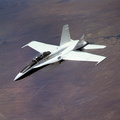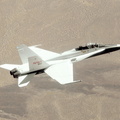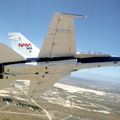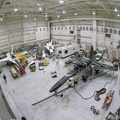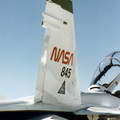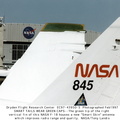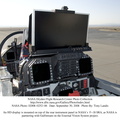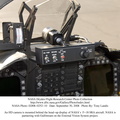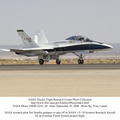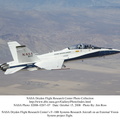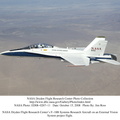
WIKIARCHIVES.SPACE
The Human Spaceflight Archive

This bright blue-and-white twin-jet aircraft may have looked like an ordinary F/A-18 Hornet fighter, but inside its was a different bird. Flown by NASA's Dryden Flight Research Center, Edwards, California, in a multi-year, joint NASA/DOD/industry program, the former Navy fighter was modified into a unique Systems Research Aircraft (SRA) to investigate a host of new technologies in the areas of flight controls, airdata sensing and advanced computing.
Information
- Taken in
- Edwards Air Force Base
- Author
- NASA
- Description
-
This bright blue-and-white twin-jet aircraft may have looked like an ordinary F/A-18 Hornet fighter, but inside its was a different bird. Flown by NASA's Dryden Flight Research Center, Edwards, California, in a multi-year, joint NASA/DOD/industry program, the former Navy fighter was modified into a unique Systems Research Aircraft (SRA) to investigate a host of new technologies in the areas of flight controls, airdata sensing and advanced computing.
One of the more than 20 experiments tested aboard the SRA F-18 was an advanced air data sensing system which used a group of pressure taps flush-mounted on the forward fuselage to measure both altitude and wind speed and direction--critical data for flight control and research investigations. The Real-Time Flush Air Data Sensing system concept was evaluated for possible use on the X-33 resuable space-launch vehicle.
The primary goal of the SRA program was to validate through flight research cutting-edge technologies which could benefit future aircraft and spacecraft by improving efficiency and performance, reducing weight and complexity, with a resultant reduction on development and operational costs.
- Created on
- Albums
- US SPACE PROGRAM / AERONAUTICS RESEARCH / F-18 HORNET / F-18 SRA
- Source link
- https://www.dfrc.nasa.gov/Gallery/Photo/F-18SRA/index.html
- Visits
- 9
- Rating score
- no rate
- Rate this photo
- License
- Public Domain
- Modified by WikiArchives
- No (original)
- Downloads
- 0
Powered by Piwigo
















